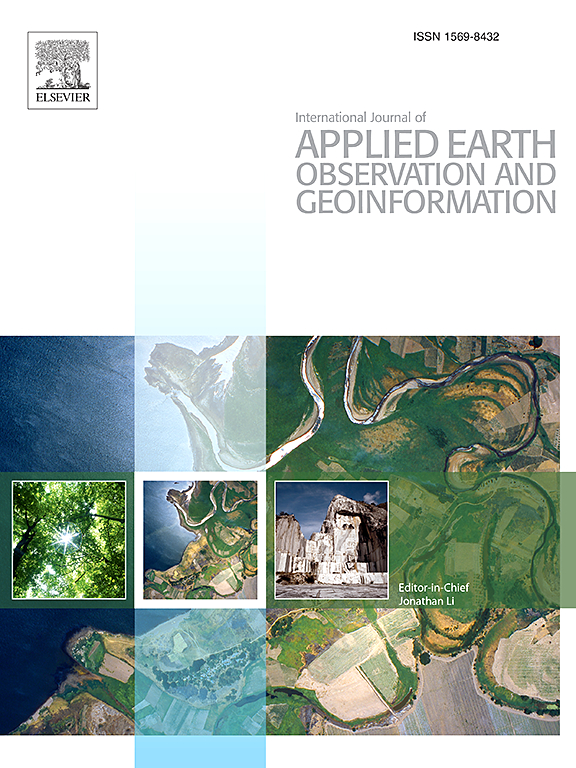System vicarious calibration and ocean color retrieval from the HY-1C UVI
IF 7.6
Q1 REMOTE SENSING
International journal of applied earth observation and geoinformation : ITC journal
Pub Date : 2025-02-01
DOI:10.1016/j.jag.2025.104417
引用次数: 0
Abstract
Ultraviolet (UV) remote sensing plays a critical role in understanding photochemical and biological processes in the global ocean. While UV radiation significantly influences the marine environment, the limited availability of global UV measurements has hindered comprehensive analyses, particularly in photochemically sensitive regions. The Ultraviolet Imager (UVI) on China’s HaiYang-1C (HY-1C) satellite, launched in 2018, offers unique data with two UV bands (355 and 385 nm), enabling the study of UV-driven oceanic processes that were previously unachievable with standard visible-only ocean color sensors. This study develops a system vicarious calibration (SVC) approach tailored for HY-1C’s UVI, integrating co-located observations from the Coastal Zone Color Scanner (COCTS) on the same satellite platform to derive accurate remote sensing reflectance (Rrs) in the UV spectrum. Using MOBY in situ measurements as reference data for SVC and ship-based measurements for validation, we demonstrate that UVI-derived Rrs achieve high accuracy, with Mean Absolute Percentage Differences (MAPD) reduced to 15.7 % and 8.4 % for the 355 and 385 nm bands, respectively, following system vicarious calibration. This enhanced accuracy provides a pathway for producing consistent UV ocean color products and contributes to a deeper understanding of marine biogeochemical cycles. The findings highlight the potential of HY-1C UVI in expanding ocean color research into the UV domain, offering valuable insights for future satellite missions.
求助全文
约1分钟内获得全文
求助全文
来源期刊

International journal of applied earth observation and geoinformation : ITC journal
Global and Planetary Change, Management, Monitoring, Policy and Law, Earth-Surface Processes, Computers in Earth Sciences
CiteScore
12.00
自引率
0.00%
发文量
0
审稿时长
77 days
期刊介绍:
The International Journal of Applied Earth Observation and Geoinformation publishes original papers that utilize earth observation data for natural resource and environmental inventory and management. These data primarily originate from remote sensing platforms, including satellites and aircraft, supplemented by surface and subsurface measurements. Addressing natural resources such as forests, agricultural land, soils, and water, as well as environmental concerns like biodiversity, land degradation, and hazards, the journal explores conceptual and data-driven approaches. It covers geoinformation themes like capturing, databasing, visualization, interpretation, data quality, and spatial uncertainty.
 求助内容:
求助内容: 应助结果提醒方式:
应助结果提醒方式:


